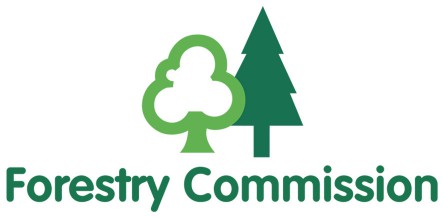Tree Health Pilot case study: Haringey Council
Published 20 November 2024
Applies to England
Oak processionary moth (OPM) (thaumetopoea processionea) is a pest that established itself in parts of the UK after being accidentally introduced from mainland Europe. Large numbers of oak trees across London are becoming infected by OPM, especially in areas of heavy footfall.
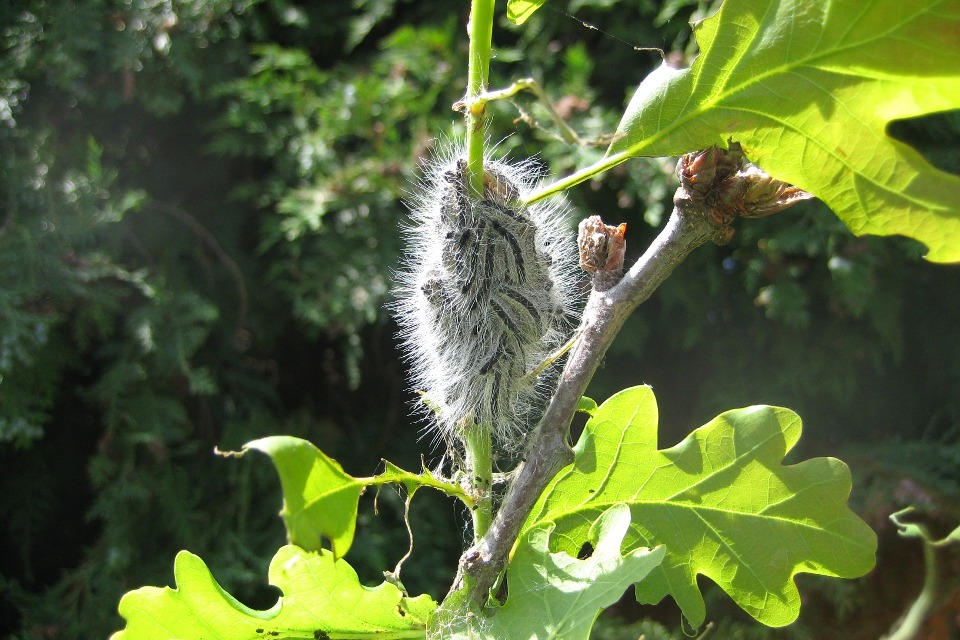
Oak processionary moth caterpillars. Crown copyright 2024.
Precautionary measures are necessary due to the risk posed to native oak trees, human health and some animals from OPM caterpillars as they:
- are capable of defoliating large areas of oak trees, leaving them vulnerable to other, external stresses, such as disease, drought or flooding
- have thousands of hairs, which when in contact with human or animal skin can cause unpleasant rashes. In isolated cases, the hairs can cause issues such as sore throats, breathing difficulties and eye problems
Haringey’s management approach
Haringey has had an issue of OPM since new discoveries were made in the early 2000s. The borough’s land size is approximately 2960 hectares, with 426 hectares containing oak trees.
To mitigate the levels of OPM, the local authority has tried their best to reduce populations through a combination of management approaches.
These include chemical control by utilising targeted insecticides in select, high-risk areas and integrated biosecurity protocols to restricting movement around high-risk areas by diverting pathways and displaying warning signs.
The primary challenges have been managing the ongoing surveying and control of OPM, in line with Forestry Commission guidance, despite the absence of a dedicated budget for OPM management. A lack of stakeholder communication across the borough meant information and awareness of the pest was not being distributed as well as it could have been and a greater collective effort was needed to tackle the issue.
Haringey Council applied for the Tree Health Pilot grant scheme as the lead facilitator, with Alexandra Park and Palace Charitable Trust acting as the group applicant. Together, they coordinate efforts to address and manage oak trees impacted by OPM. Haringey’s role includes managing resources, organising activities, and ensuring project progress by facilitating meetings, workshops, and community events on OPM and biodiversity. They also oversee project monitoring, evaluates its impact, and reports outcomes to the Forestry Commission and stakeholders.
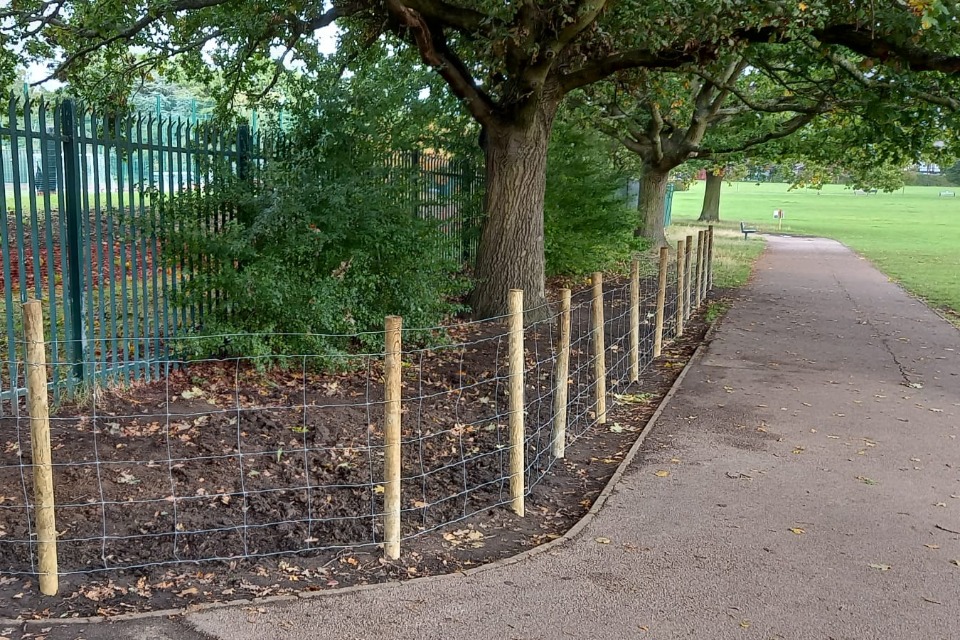
Post and wire fencing was put up to cordon off high risk areas along public footpaths. Crown copyright 2024.
Quick facts
Land type: Local parks, woodlands, golf clubs, and recreational areas that contain oak trees, particularly near public access points.
Species: oak.
Land size: 426.1 hectares.
Grant used: Tree Health Pilot OPM grant.
Haringey falls within the established area for OPM.
The solution
Aims: to reduce the impacts of OPM and control spread, promote biodiversity and raise public awareness.
How: the Tree Health Pilot helped fund and support the:
- creation of an OPM management plan
- surveying for infected trees across 2 seasons
- introduction of nature based solutions to help manage OPM
- coordination of activities with other stakeholders and group members
- communication and engagement activity and biosecurity items, such as fence posts and signage
Annabel Foskett, Nature Conservation Officer said:
Leading the grant project in Haringey has been an exciting and rewarding experience. It involved careful planning, teamwork, and a shared commitment to tree and environmental health. Working closely with stakeholders and partners, we achieved positive outcomes that highlight the strength of collaboration in tackling environmental challenges. The success of this project underscores the power of community-driven efforts in making a real impact.
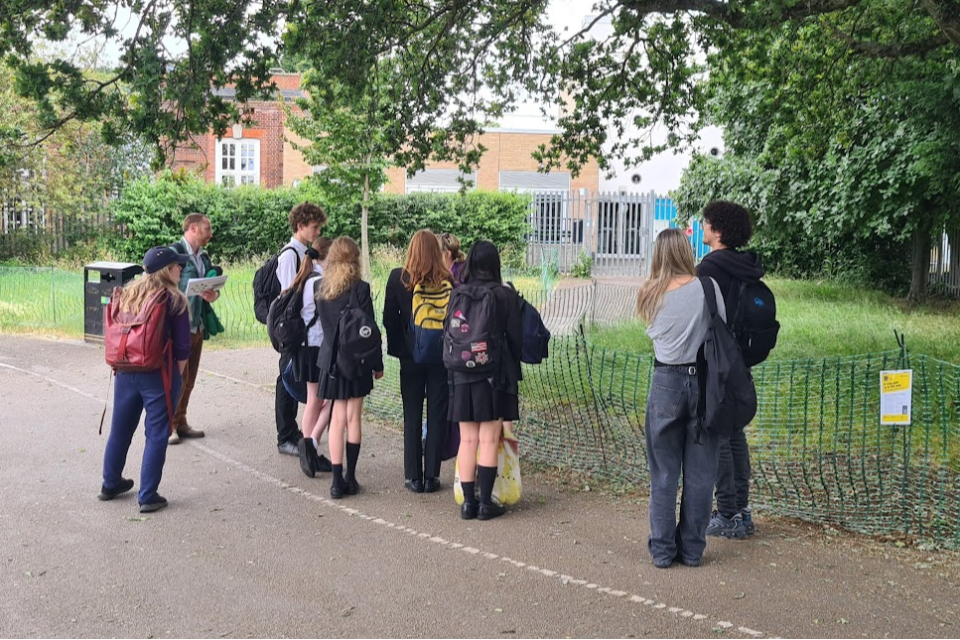
Alexandra Park school children getting involved. Educational programmes can raise awareness about OPM and involve local residents in monitoring and management. Crown copyright 2024.
Stakeholder engagement
Stakeholders involved in the project were:
- Alexandra Park and Palace Charitable Trust
- Friends of Alexandra Park
- TCV (The Conservation Volunteers)
- GiGL (Greenspace Information for Greater London)
- Rhodes Avenue Primary School
- the Environment Committee of Alexandra Park School
- Operational staff (O’Connor’s and LBH Ops Teams)
- Forestry Commission
- Bartlett Tree Experts
Active engagement within the community
- A visit to Rhodes Avenue Primary School involved an assembly raising awareness of OPM, encouraging children to create posters reflecting their learning and the possibilities of nature based solutions.
- Key Stage 2 and Key Stage 3 students at Alexandra Park School were taught the effects of OPM on the local area. Future learning opportunities were discussed, including workshops on habitat diversification and the environmental benefits of relaxed mowing and carbon sequestration. Social media can also have place in spreading the information and there is the potential to link OPM into the Science, Technology, Engineering and Mathematics (STEM) curriculum by means of a case study.
Maria Panayiotou-Argyrou, Headteacher, Rhodes Avenue Primary School said:
Thank you so much for the assembly. The children and their parents really appreciated the valuable information you provided about the OPM.
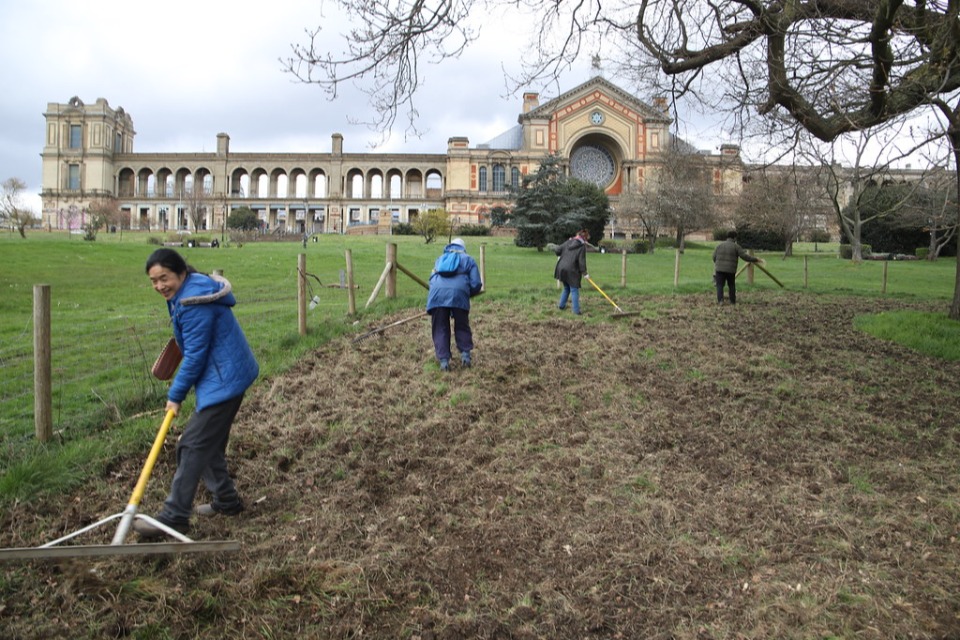
Local residents prepare the ground to sow seeds for a wild flower meadow at Alexander Park Palace. Crown copyright 2024.
Biosecurity measures
Forestry Commission signage was assembled around high-risk trees diverting the public.
Information was provided to the public. This included details on how to report OPM sightings through Tree Alert.
Park benches were taken out of action in high-risk areas.
Nature based solutions and project actions
Guidance on implementing nature based solutions, and financial support to coordinate the following activities were provided by the Tree Health Pilot:
- prepare ground for sowing
- sowing wildflowers, which attract natural predators such as birds and insects
- relaxed mowing
- encourage bird/bat boxes
- create and install signage for OPM and the pilot
- engagement with stakeholders (school, sports facilities, cafe)
- monitor impact through fixed point photography and surveys
Delivery of the nature based solutions were council funded.
How the Tree Health Pilot was beneficial
Increased monitoring and risk-based planning
The scheme enabled OPM to be successfully surveyed across the entire borough over two consecutive years. In addition, the grant funding enabled Haringey to create an Action Management Plan that analysed the survey data and systematically categorised the sites into low and high-risk areas of this pest, engaging communities in its implementation.
Collaborative approach
The Tree Health Pilot brought together local authority, landowners, and communities to tackle the risks posed by OPM. This partnership raised awareness, informed the public about high-risk areas, and established safe management practices to reduce exposure to the moth’s harmful hairs. By working together, stakeholders strengthened biosecurity, built resilience in green spaces, and fostered community engagement in biodiversity. The combined expertise and resources of all involved created a safer, more sustainable environment across Haringey.
Nature based solutions
The scheme’s success lies in its collaborative and community-focused approach to tree health management by integrating scientific knowledge with community engagement and innovative practices. Building shared understanding of nature based solutions, such as delaying the mowing of grass, sowing seeds to create wildflower meadows and building bird boxes, helps to increase populations of natural predators.
Why apply for the Tree Health Pilot
There are many benefits of applying for the Tree Health Pilot, including:
- gaining a better understanding of OPM spread and appropriate management approaches
- increased support for communicating and alerting public to the risks of OPM to help lessen complaints
- empowering staff
- local nature recovery and better protected healthy oak trees
- more cost effective as part of a group if you’re working collaboratively with local stakeholders
- taking coordinated action is likely to be more effective at stopping OPM spread, if you are addressing the risks both on your own land and in surrounding areas
Find out more
Find out how we can support you to deal with oak processionary moth (OPM) in your local area and the funding that is available to help local authorities.
See available grants for oak with OPM.
How to manage OPM.
See more OPM resources.
